Climbing in Patagonia is like no other, the local gigantic granite towers offer hundreds of directions, that literally scream "climb me". As a rule, every single route to any of the peaks in the Fitz Roy and Cerro Torre group offers exceptionally good quality rock and a high level of technical difficulty, with routes starting at 6a and WI5 respectively. This also means, that there are virtually no walking descents from the peaks and everything is abseiling, which is an adventure by itself in Patagonia.
Another thing, that is unprecedented, is the Patagonian weather. These mountains "at the end of the world" are notorious for their extreme weather, which is mainly due to their location. They act as a wall between hundreds of kilometres of endless steppe to the east and the gigantic South Patagonian glacier to the west, which creates winds that whip these mountains from the west and north with incredible force and persistence. One of the things we have learned very quickly, is that the Patagonian elements are not to be trifled with. One must learn to evaluate the forecast well and not overestimate the good weather windows. Getting stuck in a wall in bad weather can have fatal consequences, whether because of hypothermia or simply because you don't know how to rappel. In the event of an accident in the wall, no one will rescue you, because even if the flight conditions happen to be right, the nearest helicopter is 1000 kilometres away.
Probably every climber, who comes to Patagonia, wants to climb Fitz Roy and Cerro Torre, we were no exception. To climb these so-called "Plan A" climbs you need, besides the obvious, physical and mental readiness, a huge dose of luck with the weather and conditions. 3 days of good weather are usually needed for these major landmark climbs. For this reason it is good not to fly with your head in the clouds, but to have plan B, C and D in your talon...
When I asked my friend and long-time climbing partner Marek, on the glacier below Grand Capucino, over the summer "so what about Patagonia in winter?" I don't think he hesitated a second with his answer. As time passed, other good friends Matej and Mário also got excited about this trip. And so our climbing group was complete, the fun would be taken care of!
Aguja Medialuna & El Mocho
Do you know what's wrong with shooting a photo like this upon your arrival to El Chalten? (photo below ). That you are not climbing or at least approaching at that very moment. We arrived to Chalten on New Year's Day after two days of travel and a slight delay for the three day weather window. We didn't stay long in the village and after getting some sleep, we immediately headed up into the mountains and made the 20 kilometers climb to the Noruegos bivouac. As this was our first contact with the local mountains and not knowing what to expect from the weather we chose some nice rock climbing on the lower towers of Aguja Medialuna and El Mocho to get acquainted. In hindsight, this particular window turned out to be the best we had in the whole 5 weeks, and had it come a little later, we might have used it for a more ambitious plan. That's not to say, that the climbing of two routes we climbed on these towers wasn't good, it was phenomenal! On the first day we managed to climb the Rubio Y Azul route (6c,350m) to Medialuna. Eleven pitches of glorious crack climbing with a key ninth pitch as a cherry on the top. An overhanging fist crack in a huge chimney where I had to fight pretty solidly for onsight. At the top we were greeted by breathtaking views, with the massif of the whole Fitzroy and the huge Cerro Torre looming at our backs. Mario joined us the next day, as Matej was struck down with illness and had to stay in the bivouac. The three of us hit the Frader Pisafe route (6c+, 450m). An awesome line that starts with a 250m perpendicular slab corner with very interesting rock and beautiful cracks. As we got so close to the top we were beginning to suspect some troubles to come, the last length turning into a waterfall in the mid-afternoon sun. After a while of speculating which way to go, I chose the harder but drier option to the left, and at first I wasn't sure if it would be possible to climb this way at all. But everything worked out well and I fought my way up, second summit in the bag!
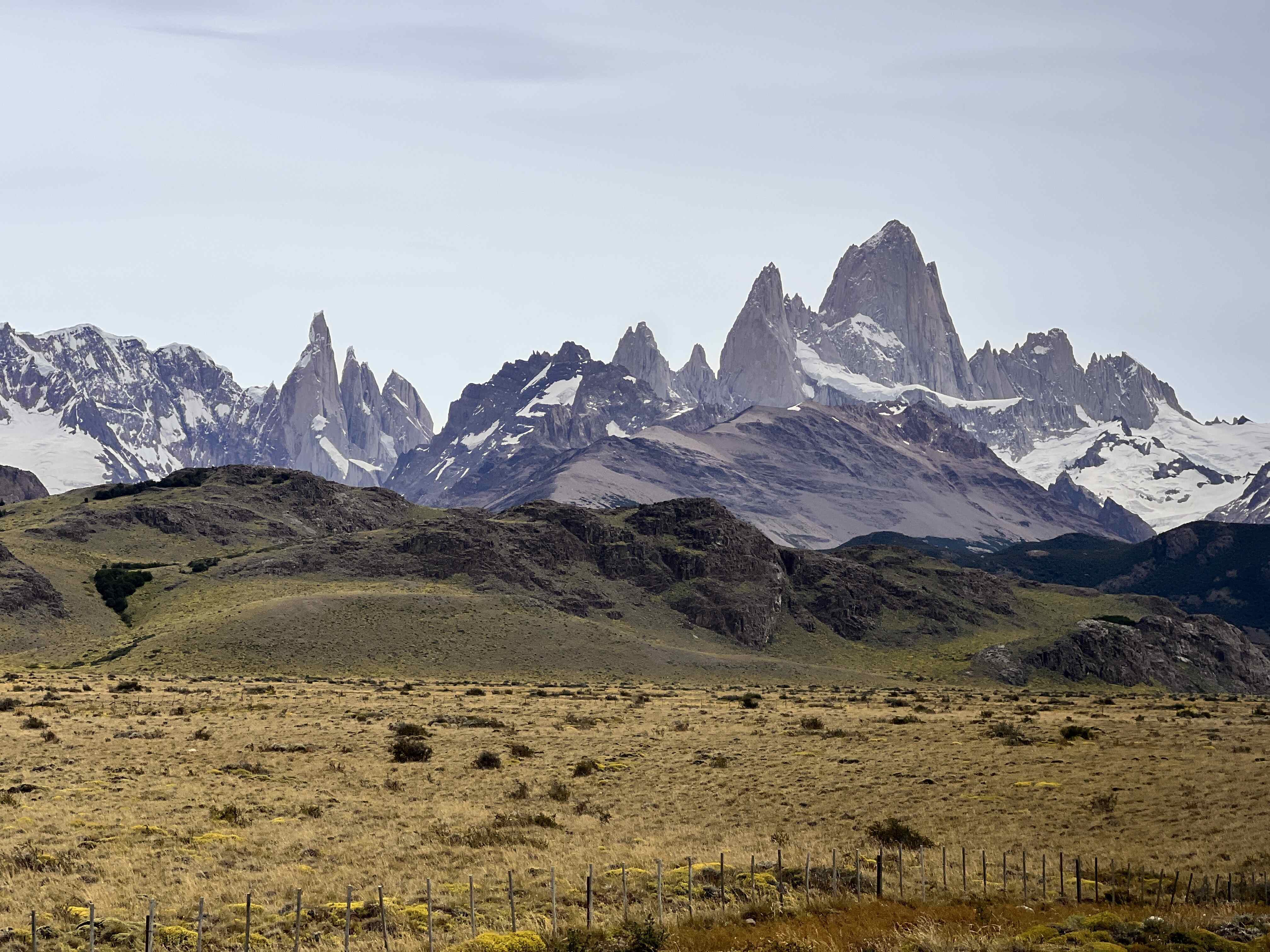
Aguja Guillaumet
After a long pause due to nasty weather, there was a 1,5 day window when the weather conditions seemed suitable for climbing, but quite cold. The decision was made to go to the tower on the northern edge of the Fitz Roy ridge, Aguja Guillaumet. Probably all the climbers in the village were of a similar mind, most with the aim of climbing the popular Brenner-Moschioni route. Already at 4am we saw the first over-motivated individuals high in the scree below the headlamp approach. Since we are not exactly the types who enjoy socializing on boulders and climbing in a train, it was immediately clear that we would not be climbing the "Brenner" today. Instead, we chose the Comesana-Fonrogue route (6b+,400m) and for an even better experience and few more meters, we decided to add the so-called sitstart Giordani (4,300m), a beautiful sharp ridge of compact rock. It was a very good choice, as we were able to climb in parallel and warm up a bit in the freezing temperatures. After about an hour of parallel climbing we smoothly started to cut the first meters of "Komesan". As the wall starts to gain slope, there was the inevitable, unpleasant activity- changing into climbing shoes. We were only redeemed from our misery by the sun turning up the northwest face at about noon, and the rest of the climb to the summit was pure enjoyment.
Fitz Royi a Aguja de la Silla
The fair practice of chess strategies and table football tournaments was interrupted, when two nice days started to appear on the forecast, after a long period of snowfall. Fitz Roy is ON! We knew the conditions would be far from ideal after the long days of snow and climbing our original objective, the Gorret Pillar, was out of the question. We chose the shorter, southeast face and the Franco-Argentine route (6c, 600m). The ascent to the Breche de Los Italianos saddle, from where the route starts, is lengthy and technically demanding, so we split it into two days. On the first day, we ascended the Passo Superior before the nice weather started, with our intended destination hiding in thick grey clouds the whole time and never once being seen. The next day we planned to climb over a crevasse, a steep ice slope and the final two lengths of the mix to Breche de Los Italianos, where we spent the second night. Early the next morning, as we approached the trailhead in the twilight, we began to sense more and more troubles. Our suspicions, which were not obvious from the bivouac at a distance, began to be confirmed. Our entire route was totally iced over to the point that, looking at it, we could only sadly conclude that today was not the day we would climb Fitz Roy. The ice in the crevasses was not stuck to the rock enough to allow climbing with ice picks, as it just fell out of the crevasses when hit, which was also very dangerous. The only way to proceed on the route would have been a laborious ice cutting and hooking, which would have been tedious and we didn't have time to do it as the window was due to close in the evening.
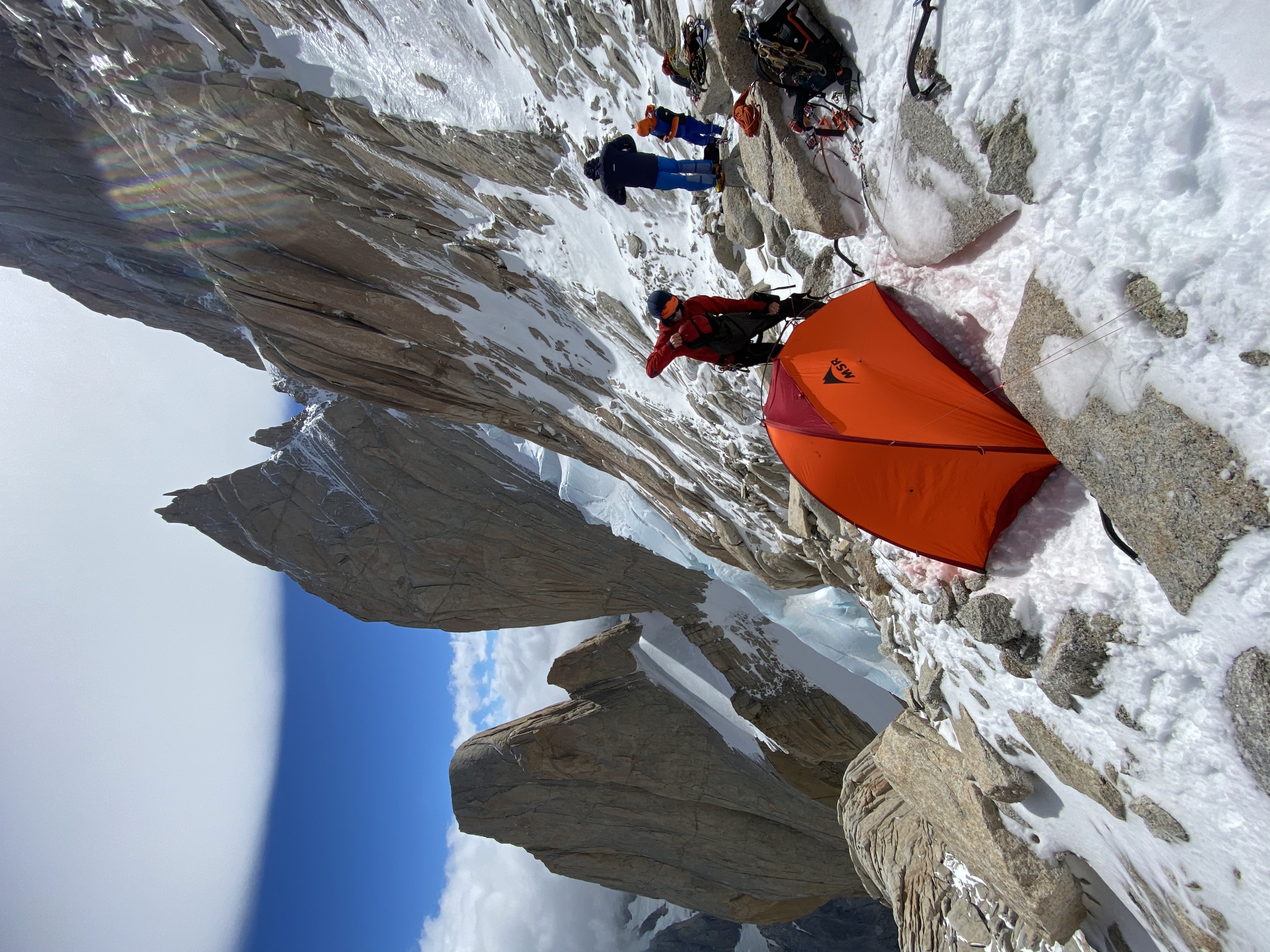
After a short briefing with the guys, we turned to the backup plan, the pretty tower of Aguja de la Silla. A beautiful and little-visited peak that is the third highest after its neighbours Aguja Poincenot and Fitz Roy. The ascent to the Col de los Americanos, from which our planned route started, was a 300 metre traverse in snow and ice with a 75 degree gradient and a 1500 metre serac drop to the Polacos bivouac below our feet. Since belaying is pointless in such terrain, Marek and I set off towards our destination without a rope. Matej and Mario didn't like this traverse very much and returned to the bivouac. After about an hour of standing on the monohills, we found ourselves in the saddle at the start of our Cara Este route (6b,250m). Aguja de la Silla greeted us with great rock but also icy crags, but fortunately the situation was not as desperate as on Fitz Roy. We enjoyed the true specialties of Patagonian climbing, such as climbing with a crampon on one foot and a climbing shoe on the other. After about three or four hours we were standing on the summit. As the temperatures rose during the day, Fitzroy began to shake off his ice shell and send chunks of ice down the whole wall, which only served to reassure us that we had made the right decision and could enjoy the admittedly somewhat smaller but beautiful summit without regrets.
Aguja de l'S
After a rainy return to the village and the traditional midnight steak, we checked the forecast and what do we see. Another almost full day window of weather in which we might be able to climb something. Quick actions are best suited to such short periods of weather, so we decided to turn from village to village, without a bivouac, up the Aguja de l'S tower, which is suitable for ventures of this type as the ascent only takes some modest 6 hours and the wall is only 450 metres high. Yes, it is small by Patagonian standards. With a minimum of sleep since descending from the previous event, we set off at two in the morning, the music in our headphones motivating us to keep up the pace. Marek and I climb the Austriaca route (6a, 450m). A climb over a crevasse and 50 degree snow lead us to the start of the rock climbing. The first half of the route takes a corner up to the saddle between Aguja de l'S and Saint Exupery, and the second half a beautiful exposed edge to the summit. The climbing is very steady and still climbs around 6a, with no tricky places and no difficulty at the same time, so we were able to fully enjoy the vertical movement through the beautiful crags. At the top, we meet Matej and Mario, who were climbing the neighbouring route "Pilar este", which was the perfect timing to the climb. We rounded the summit from village to village in 18 hours.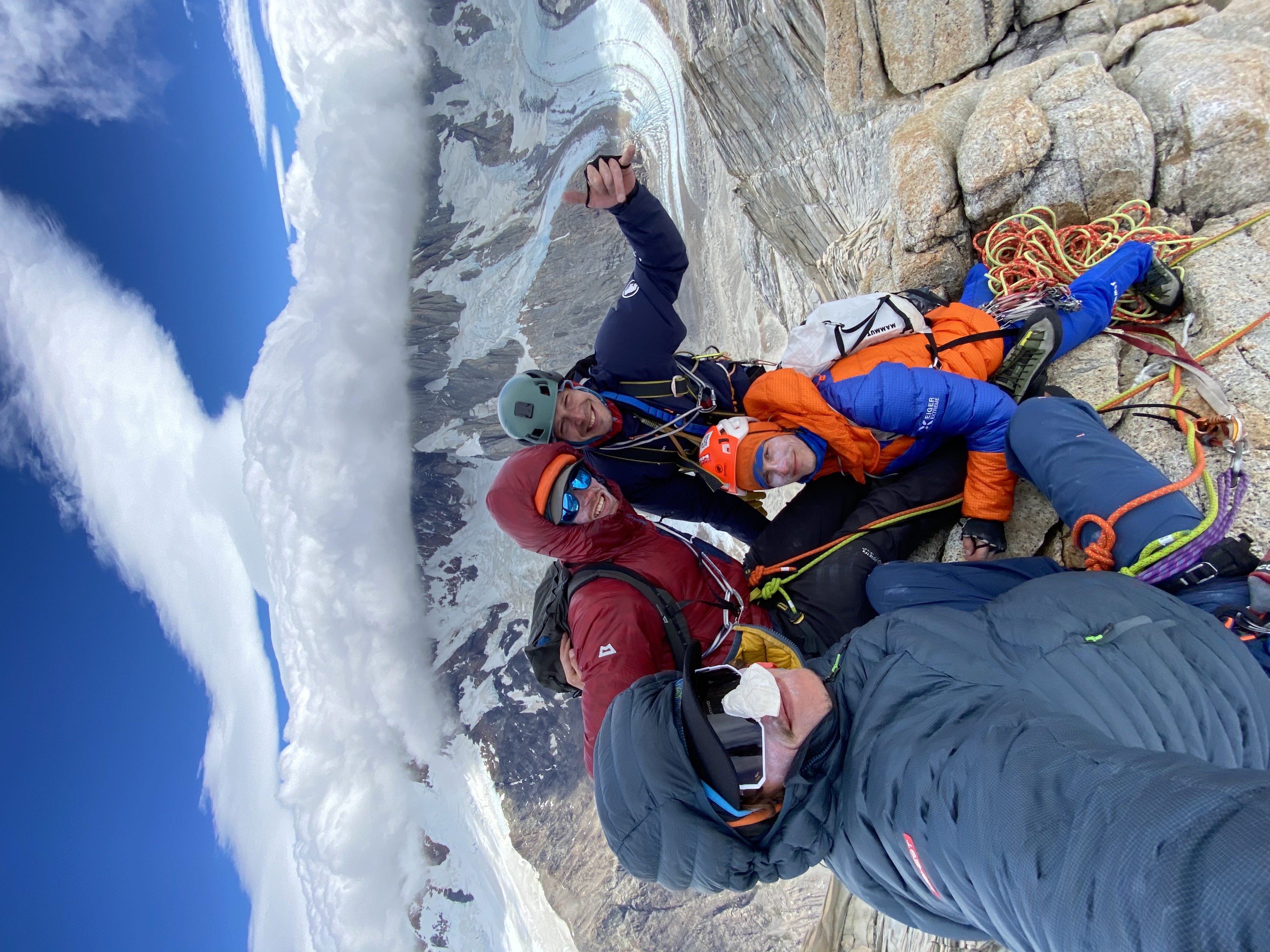
For the remaining 10 days of our stay, there was no more opportunity to climb, so we made one last run up the nice Cerro Solo to soak up the atmosphere of the mountains. Nice cardio with almost 2000 meters of elevation gain.
Text: Adam Kaniak
Photo: Adam Kaniak


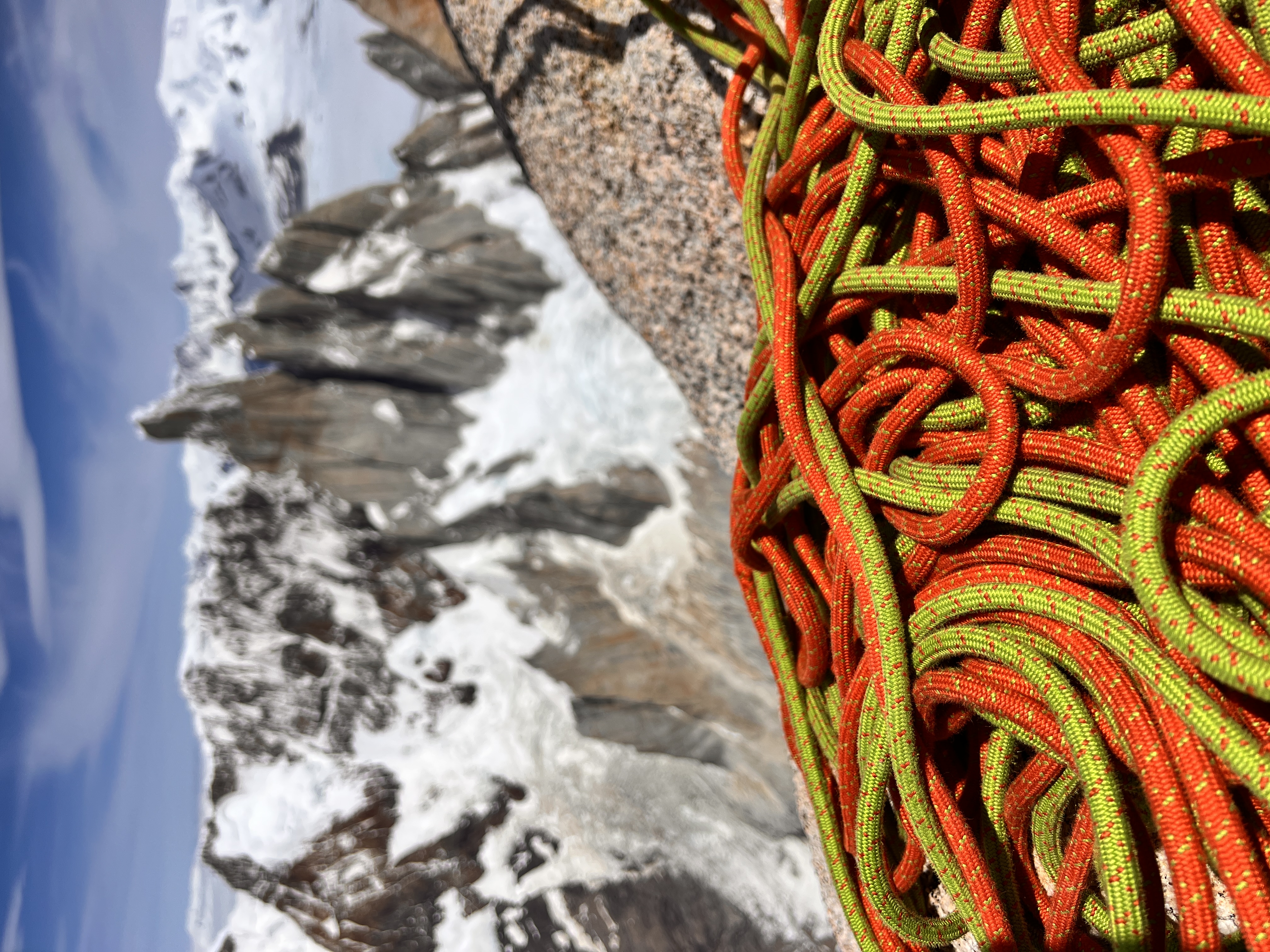
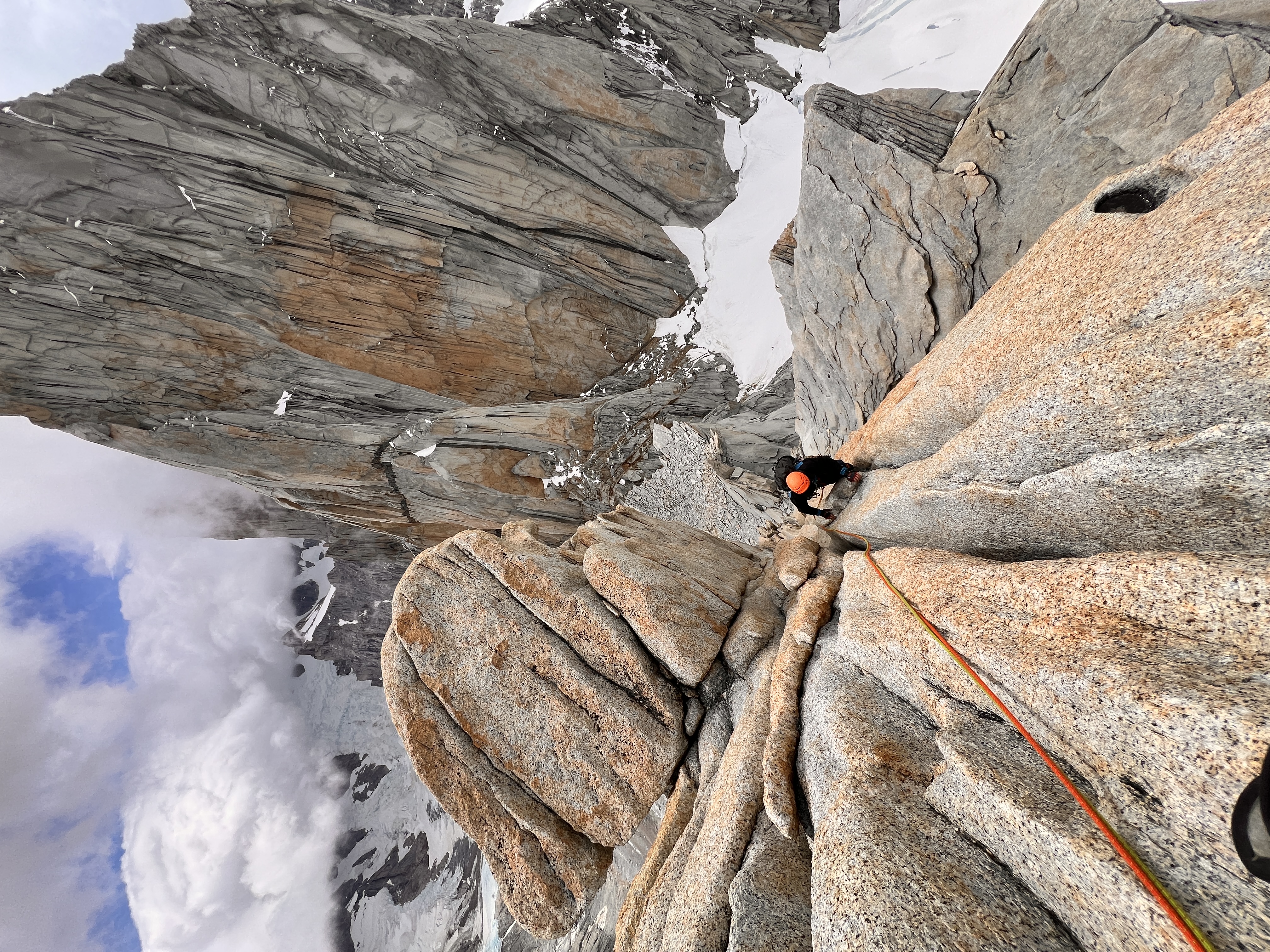

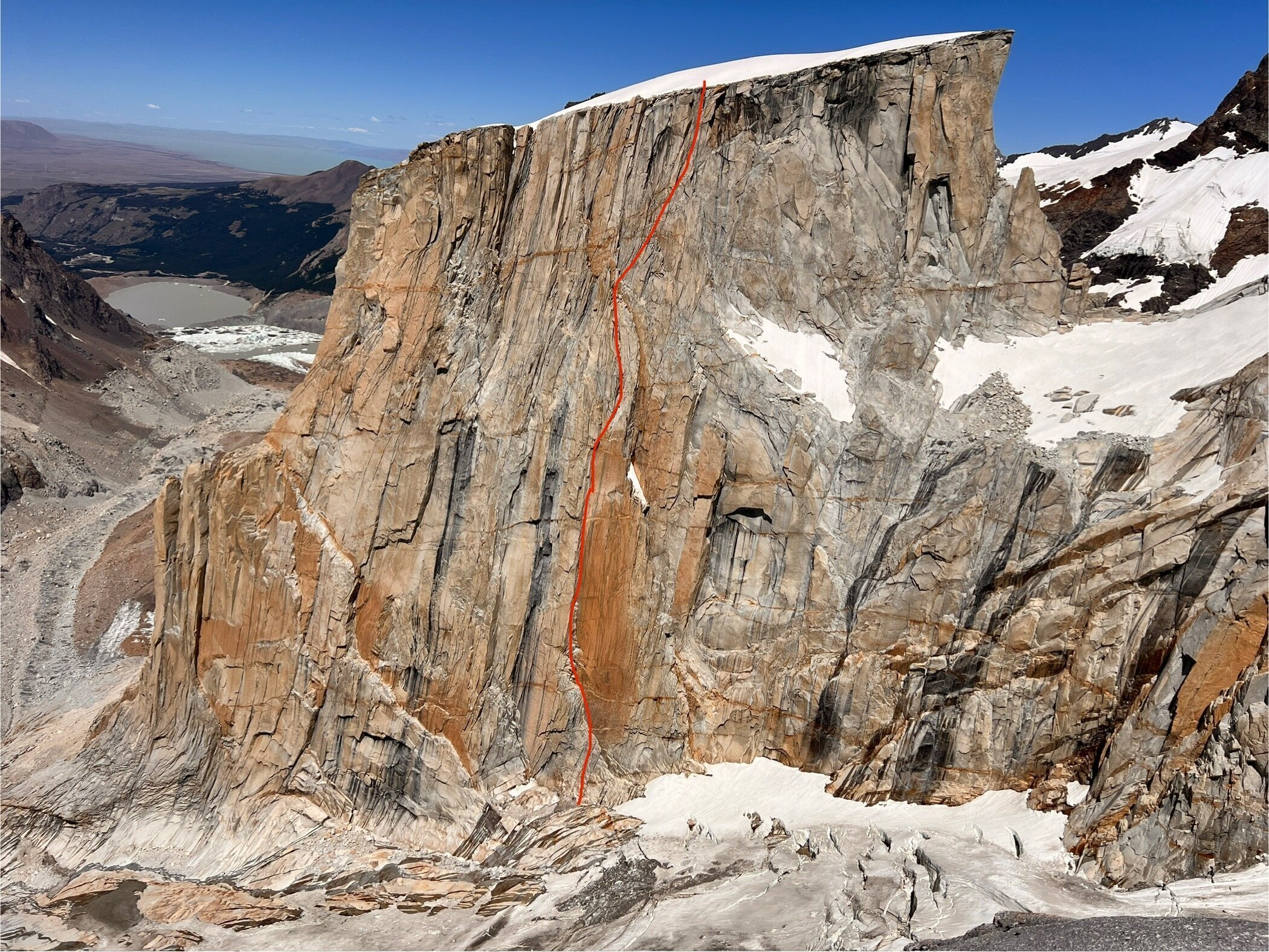
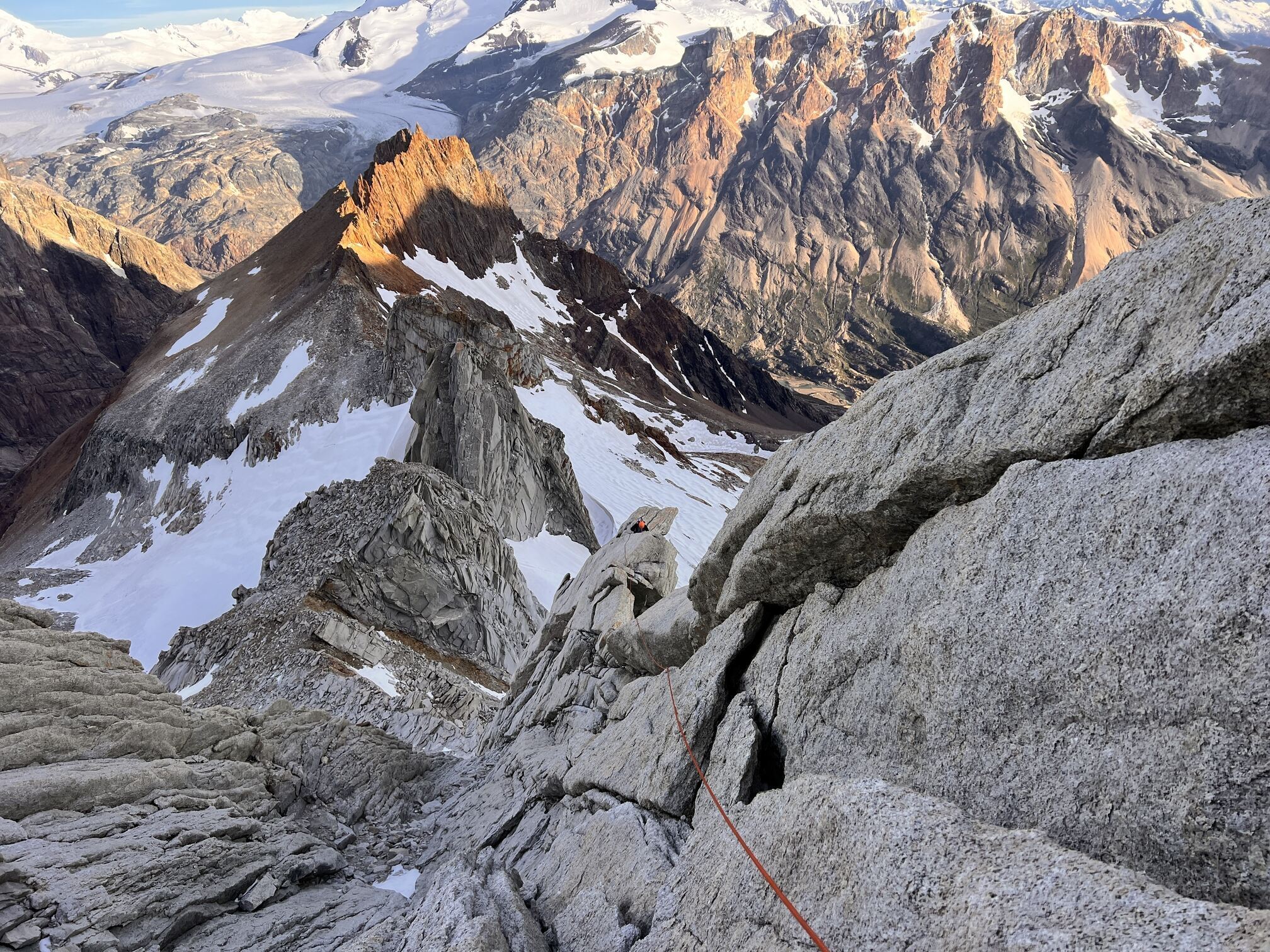
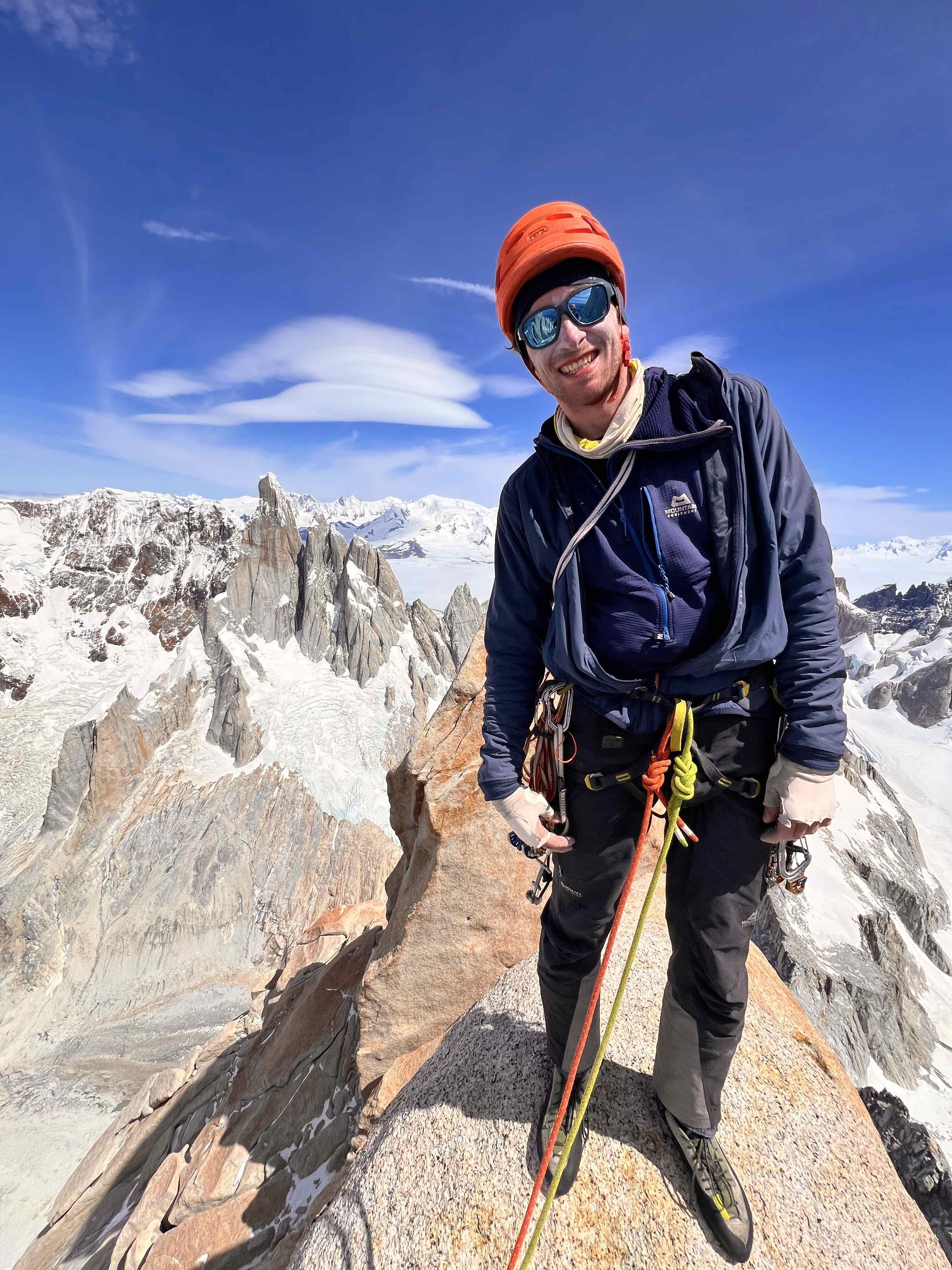
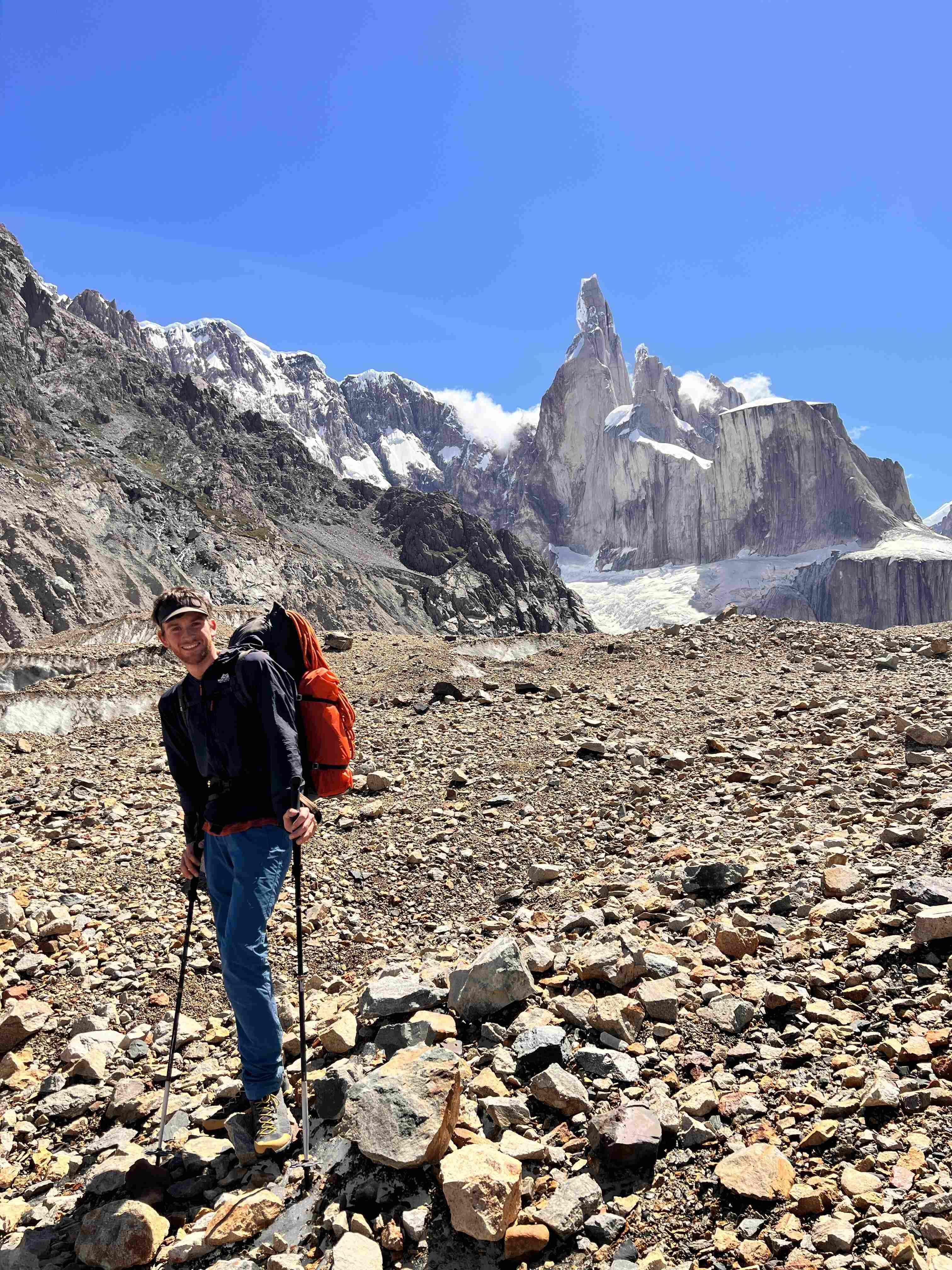
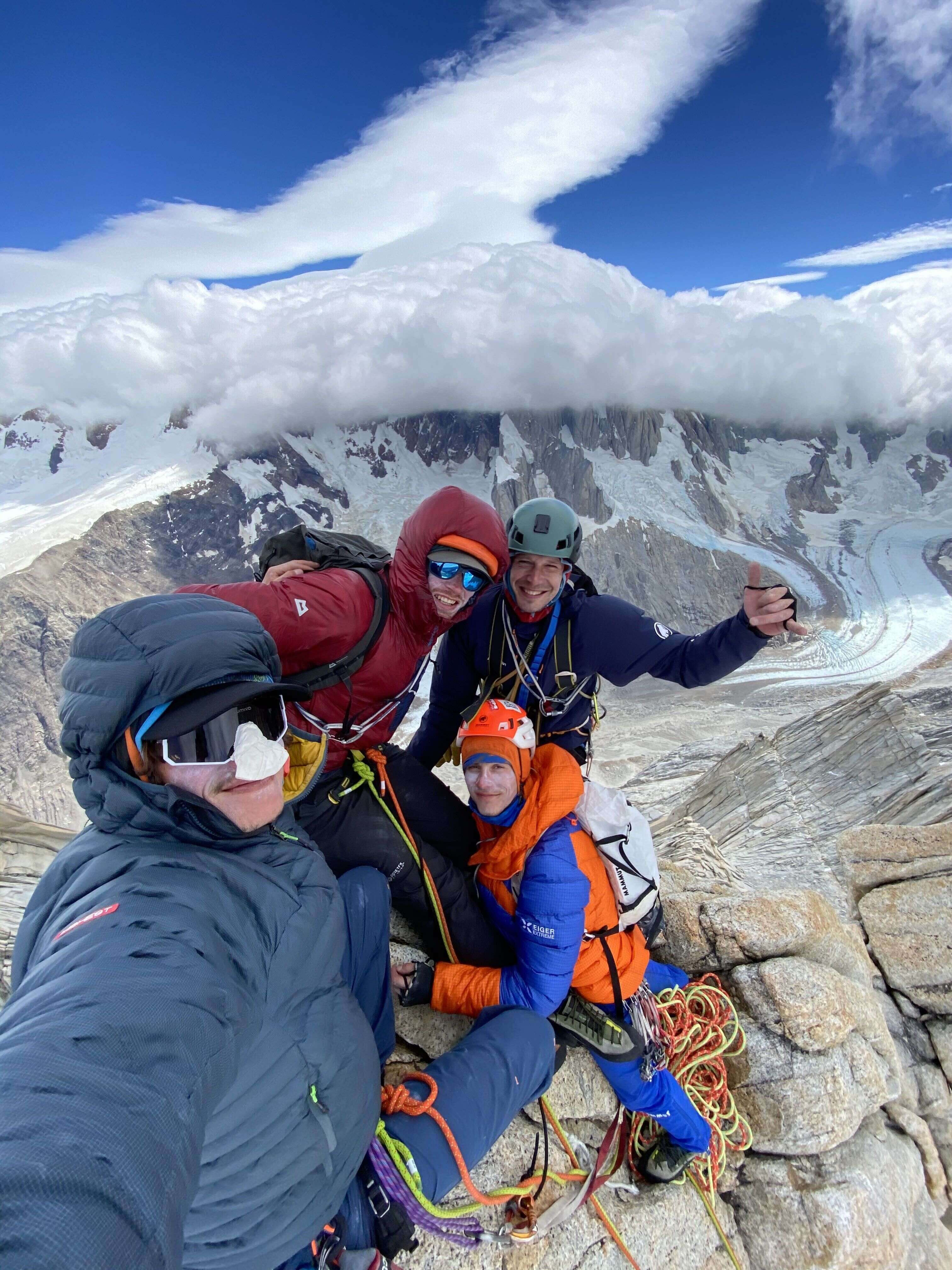
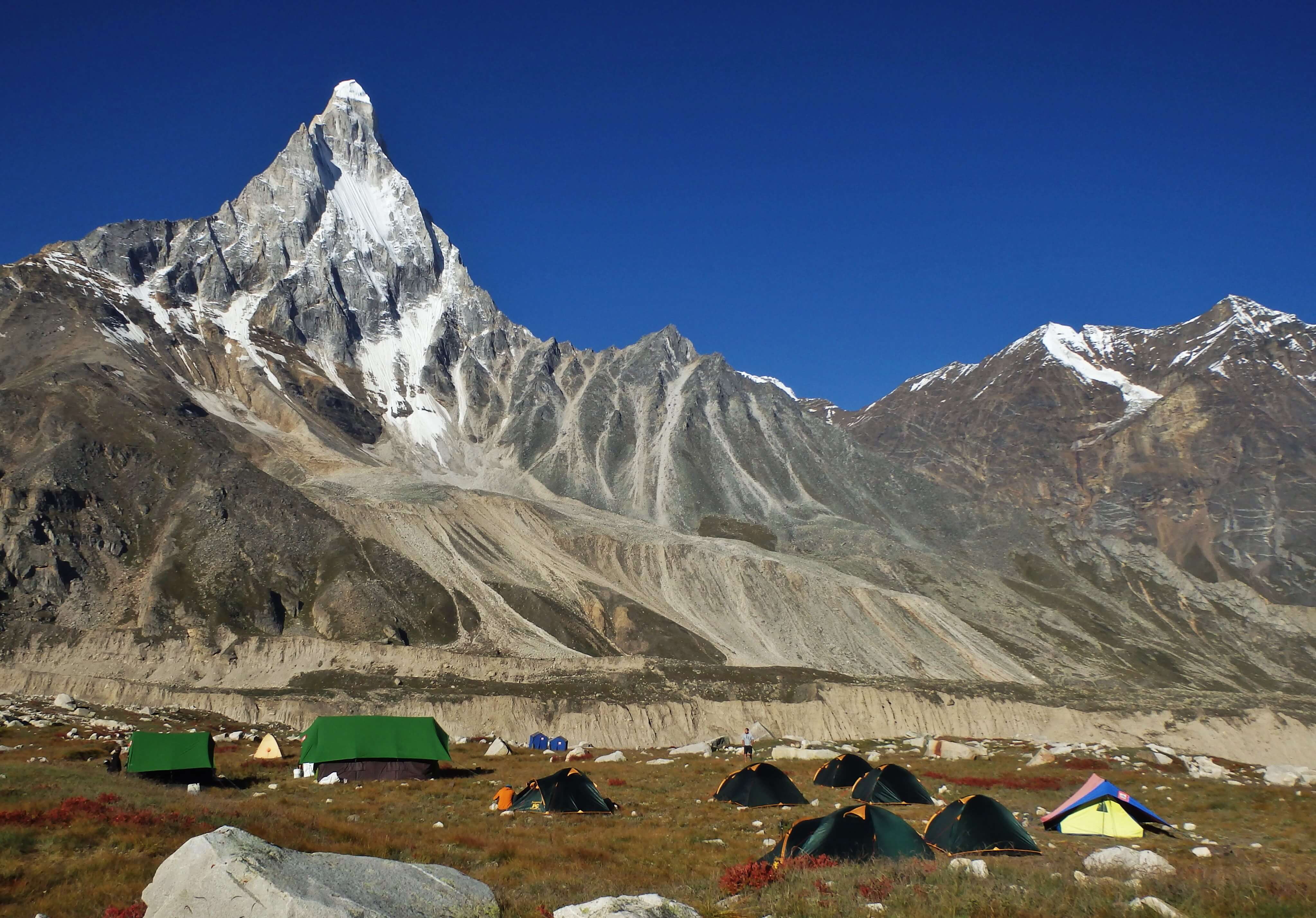
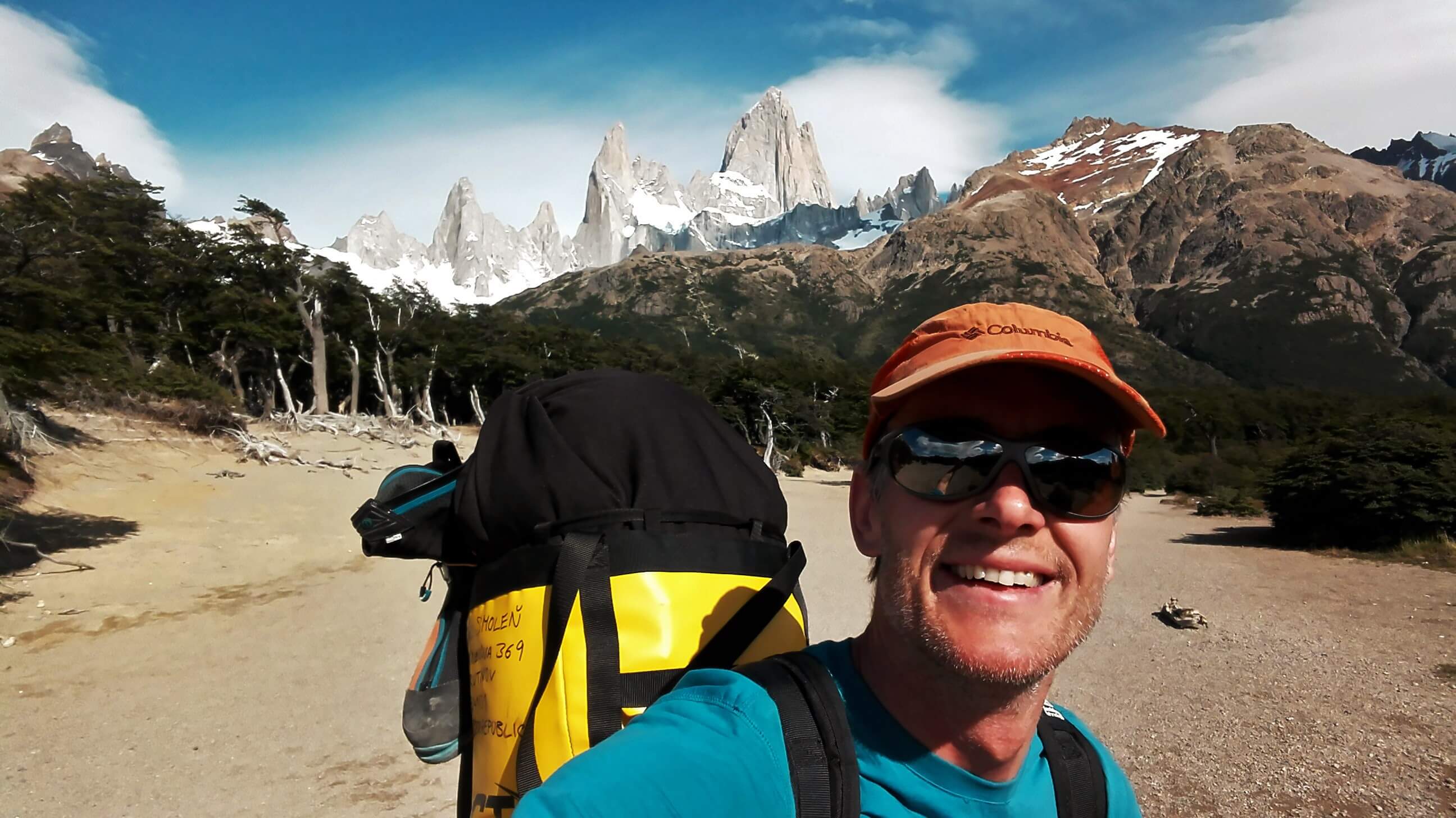
Comments (0)
There is no comment on this article.
Comments can only be inserted by logged-in user.